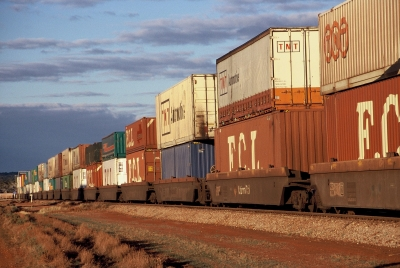
Tony Abbott's pledge to improving road safety should be welcomed, but as the rail industry well knows, measures that get trucks off the roads will always be best option for improving road safety.
It is only when the Coalition makes a commitment to getting significant volumes of freight off the roads and onto rail can Tony Abbott's personal pledge to road safety be fully supported by the Australasian Railway Association (ARA).
"The Coalition's road safety pledge contains no measures to get trucks off the roads, overlooking a significant cause of trauma on the highways and in the towns and cities," ARA CEO Bryan Nye said.
While heavy vehicles only make up around four per cent of the vehicles registered in the country, they are involved in over 17 per cent of all fatalities on Australia's roads.
The ARA advocates improving road safety by slowing the rapid growth in mega-trucks on the highways. This is done by moving more freight onto rail by investing in the existing network, clearing up known freight bottlenecks and investigating locations for future intermodal facilities.
"Simply building more roads to improve road safety is like trying to lose weight by loosening your belt – it's just not going to happen", Mr Nye said.
The ARA also laments the coalition's lack of public transport funding commitments.
"Public transport should not be an 'optional extra' on Tony Abbot's pro-car and pro-truck infrastructure priorities, if we don't invest in it now, our cities will grind to a halt in less than 20 years' time," Mr Nye continued.
"An investment in public transport has advantages in almost every aspect of our lives. Public transport is healthier for us, it boosts productivity, reduces carbon emissions, is safer and above all creates communities we would rather live in," Mr Nye said.
"The Coalition commitments now stand at ten billion dollars for new roads compared to zero dollars for rail. By anyone's measure that's an substantial imbalance," Mr Nye said.
International and Australian research shows that the overall automobile distance driven per capita is starting to level off and even decline, in contrast to a dramatic increase in public transport patronage over the last two decades.
While the current Federal Government has invested more in public transport than all previous governments combined, there is still more funding needed to ensure the future economic, social and environmental viability of our cities and regions.
"Underfunding public transport at this crucial time would set our capital cities back 20 years," Mr Nye concluded. (84)





